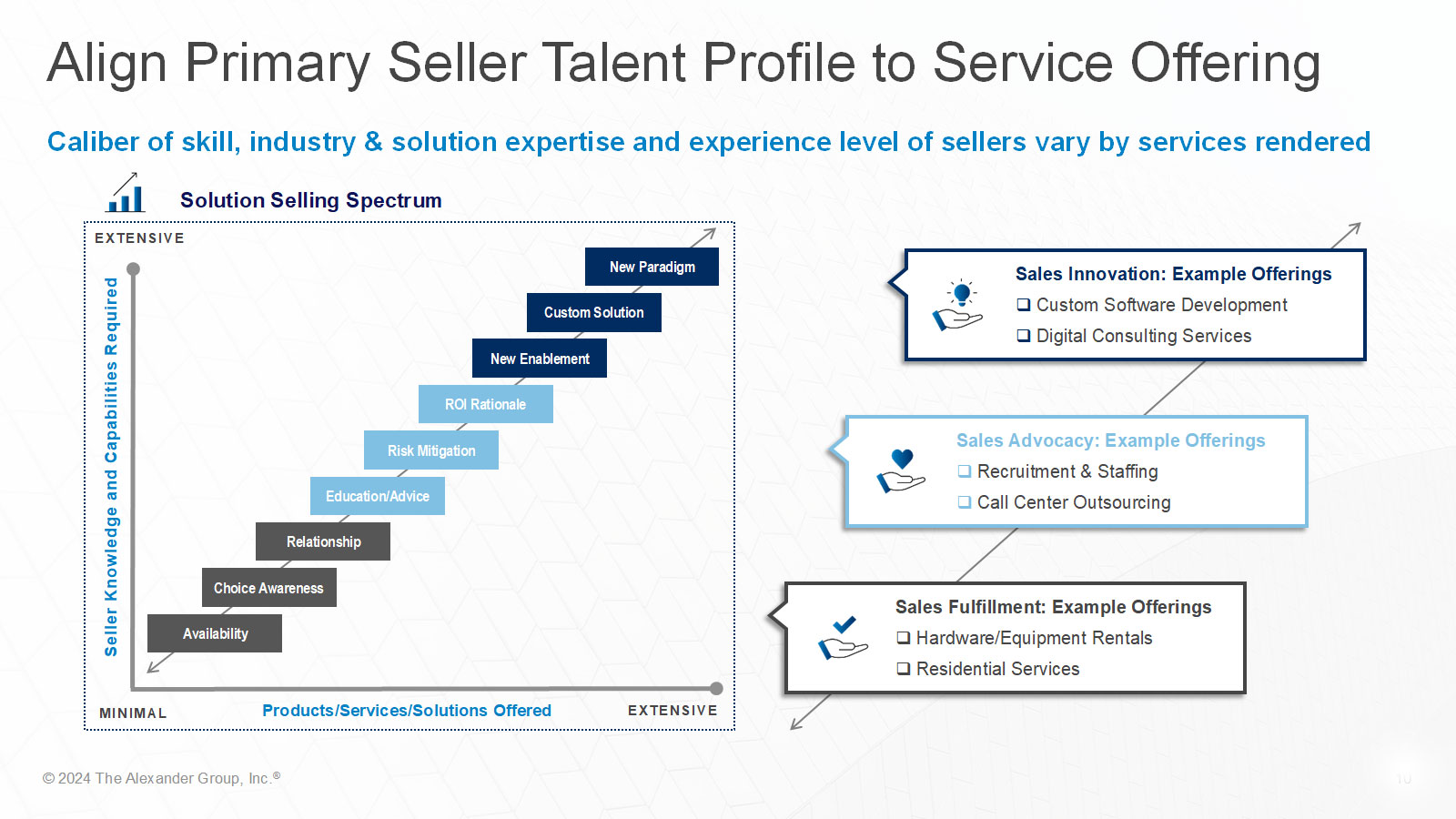Business Development Roles
Traditional business development models relied primarily on an organization’s marketing function, which then collaborated with primary sellers to qualify and hand off leads. Today, we see various models with specific sales roles dedicated to “business development” and “demand generation.”
There were three primary archetypes of business development roles that we encountered through our research, each with slight variance in terms of use case and day-to-day focus within the pre-sales continuum:
1. Lead Gen Reps
Lead generation reps focus on lead generation and qualification for new and/or existing logos and buyers. After a lead is qualified, these reps will hand leads off to either another business development role or a primary seller who will then lead and close the sale.
2. New Logo Hunters
New logo hunters focus exclusively on landing new logos – whether the buyer themselves is a new or existing contact. Unlike the lead gen rep, this role is not meant to go after existing logos. These hunters may remain involved in the sale through the initial delivery stage and work with the primary seller to ensure a smooth handoff, but typically move as soon as a client is onboarded.
3. Business Development “Executives”
Business development executives are those who generate net-new business via their existing relationships. This person is often an industry SME, with a rolodex of contacts and relationships they can call upon to bring new business into the organization. Though their focus should be on new business like the new logo hunter, BD executives may also drive existing business sales through their contacts.
Post-Sales Support Roles
Like pre-sales roles, post-sales roles play an important part in ensuring that the customer is appropriately covered at every point in the customer journey. Three key support roles we see in the market are client lead/project manager, customer support manager and customer support.
These roles own and support the different delivery activities – customer onboarding, execution and customer support/service. When deployed appropriately, these roles ensure a smooth transition between the sale and delivery of the offering. These roles increase customer satisfaction, allowing them to collaborate with primary sellers and AMs to drive expansion and reselling, as well as to manage recurring customers.
Alexander Group research recently found that 53% of companies are increasing customer success manager headcount in 2024. This demonstrates that organizations are seeing the value in these roles and are making investments in them to achieve their growth goals.
Key Takeaways for B2B Services Leaders
For business services organizations, there are four key coverage capabilities to focus on in 2025 and beyond:
1. Efficient Coverage
Organizations need to invest in AI and technology to reduce seller “manual labor”. They should also strategically identify target segments and focus inside sellers on the long-tail and product lines that don’t require significant seller expertise.
2. Specialization
It is important to have clear rules of engagement for AMs to ensure a seamless buyer experience, as well as compensation structures aligned to the different sales and advisor hats specialists have to wear.
3. Pre-Sales Efficiency
Reviewing the demand generation funnel, lead conversion and handoffs, along with balancing business development resources, can increase both lead quantity and quality.
4. Post-Sales Success
Companies should design their post-sales coverage to increase customer satisfaction and value realization and ensure talent profiles of delivery roles are designed to drive expansion.
By focusing on these key areas, B2B services leaders can optimize their coverage models and job roles to drive profitable growth and achieve their strategic objectives.






